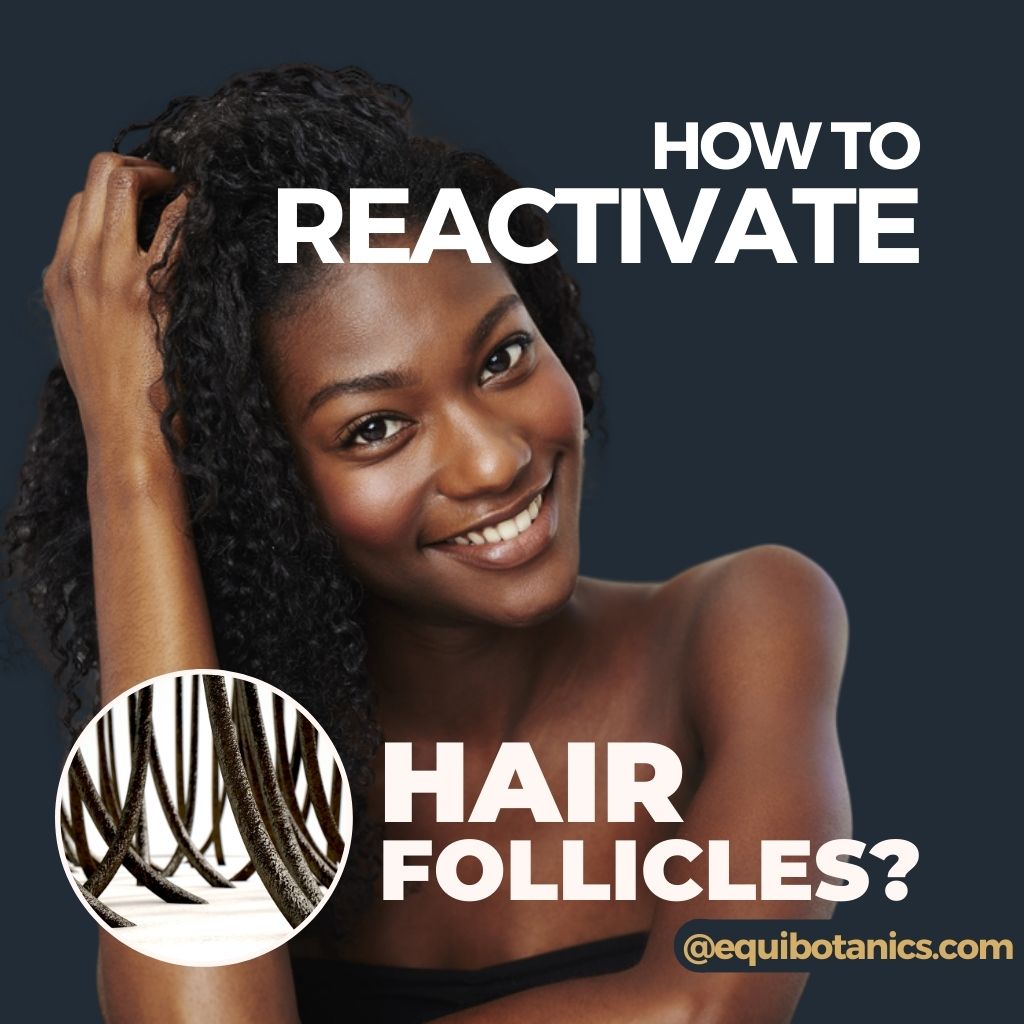
Realising that your hair follicles are dead (or dying) can be a horrible feeling; are you undergoing a permanent, irreversible thinning princess, or is there something you can do? Fortunately for you, it’s the latter.
There’s no need to panic, and the problem of dormant or inactive hair follicles can be nipped in the bud provided you act swiftly. We’ll also look at the various causes of hair loss; many people think it must be genetic, but that’s not always the case. First, though, how can you tell if you’ve got dead hair follicles?
What Do Dead Hair Follicles Look Like?

It can be difficult to know if your hair follicles are dead, or whether you’re just going through a period of thinning hair. Fortunately, however, there are a couple of ways you can tell the difference. Dead hair follicles are most evident when the scalp’s skin (where the hair once grew) becomes smoother and shinier in appearance.
In other words, there’ll quite literally be no hair there/no signs of regrowth if your hair follicles are completely dead. If there’s still a patch of growth, no matter how minor or ‘scuzzy’, then that dying process might yet be treated.
Can Inactive Hair Follicles Grow Back?
It is possible to ‘reactivate’ dormant/dying hair follicles, though it can take a bit of time. Truly dead hair follicles are almost impossible to reactivate, except with the help of medical/surgical treatment, so it’s important that you take action on your dying hair follicles as soon as you’re able – the earlier the better. But how exactly do you stimulate those inactive hair follicles?
Why is My Hair Thinning?

When it comes to hair loss, there are a wide range of causes, and it’s certainly not a one-size-fits-all kind of thing.
Non-Genetic
Fortunately, sometimes your loss of hair can be down to non-genetic factors, such as stress. Known as telogen effluvium, this refers to when our hair follicles are sent into a sort of resting phase, usually as a result of either high stress or trauma. Hair loss can also be caused by fungal infections, which are typically treated using a topical ointment or OTC medication.
Now, we know that living a less stressful existence is far easier said than done, but if you can introduce some more calm and relaxation into your life, then you may well find those patches of thinner hair growing thicker once again. Alopecia areata is another similar hair loss condition which can be exacerbated by stress.
A technique you can try and utilise to bring your stress under control is mindfulness, which can help bring your thinking into the present, and to ground yourself more. It’s not a cure-all, and it’s not effective for everyone, but a bit of mindfulness can go a long way in stemming hair loss.
Genetic
Unfortunately, just as hair loss can be caused by non-genetic factors, there are genetic hair loss conditions which are harder to combat. Female pattern baldness, for instance, is a genetic condition. The progress of female pattern baldness is inexorable, you’re not going to be able to stop it. You can, however slow it down, and constantly refreshing and looking after your hair follicles is one such way to curb its progress.
How to Stimulate Hair Follicles For Hair Growth

The best way to stimulate hair follicles for hair growth is to do the following:
- Regularly massage your scalp; the simplest thing you can do to start with is frequently running your hands over your scalp. This motion can help kickstart the reactivation process.
- Consider a medical option; now we’re not necessarily talking about anything as drastic as surgery or a hair transplant (though this can be used as a last resort). What we’re talking about are medications such as minoxidil.
- Alternatively, why not consider a holistic, supplement-based treatment? If you don’t want to go down the medication route, which some people consider harsh on their head, then why not try a natural option, instead?
Natural Remedies for Inactive Hair Follicles
Alongside regularly massaging your head, you can also consider stopping using chemical products, hair straighteners and other intensive products that can cause your hair to dry out and strip them of the oils which serve as protective chemicals for your hair. Without those protective chemicals, your hair follicles are more susceptible to damage, and therefore death. If you regularly straighten your hair, for instance, you might’ve found that your hair becomes drier and more straw-like in both feel and appearance. Switching away from these intensive methods can help rectify that.
Once you’ve established that gentler routine on your scalp, it’s time to start treating those thinning patches with naturally-derived treatments. Our Black Seed Hair Elixir, for instance, contains a whopping 33 oils, herbs and other active ingredients, especially designed to help protect, rehydrate and stimulate your hair follicles.

By regularly using natural products such as Black seed oil these, reducing the amount of stress in your life, and opting for less-intensive hair care methods, you stand a good chance of reinvigorating those dormant hair follicles, and stimulating hair growth once more.
Final Thoughts…
Hopefully, having read this, you’ll now have a better understanding of how to salvage thinning patches of hair caused by dying hair follicles. To view our full range of products, which include damage and retention products, as well as conditioners and hair masques, click here!
Alternatively, if you want to get in touch to ask about our products, then send us an email at info@equibotanics.com. We can’t wait to hear from you.


